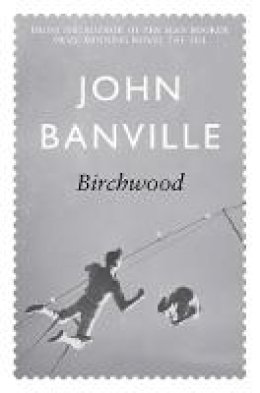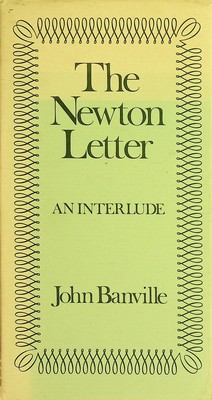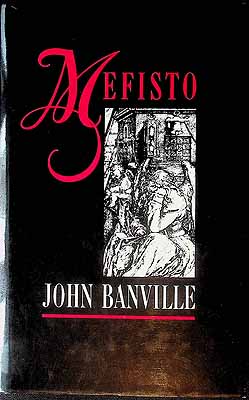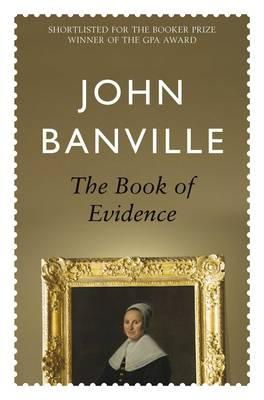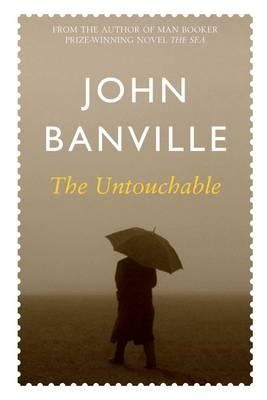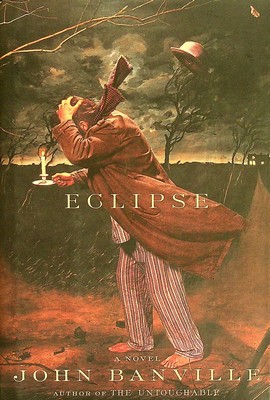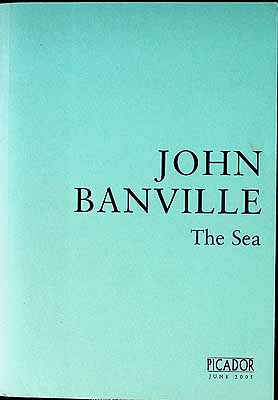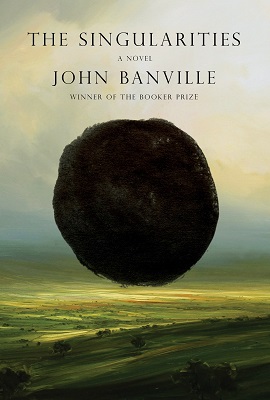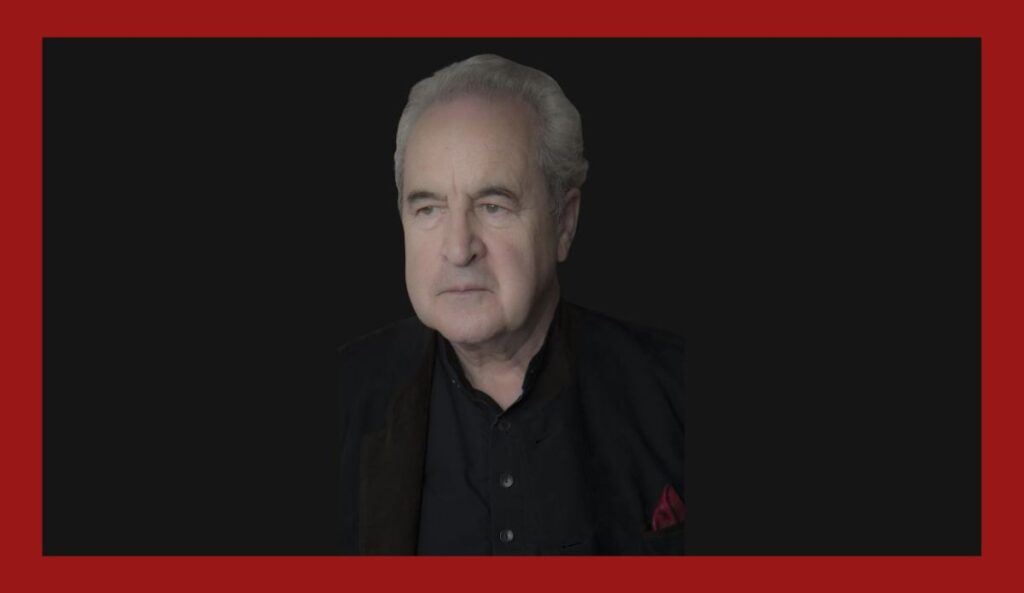
John Banville—one of the greatest imaginations in Irish literary history
Redemptive despair, surprise and versatility, and the failure and triumph of art—Eoghan Smith on the deep, echoing work of John Banville
by Eoghan Smith
Since the publication in 1970 of his short story collection Long Lankin, Wexford author John Banville has occupied an important place in Irish literature: his writing is the most significant contemporary link with the Irish modernist tradition.
Of his most preeminent Irish modernist forebears, Banville has differentiated himself by saying that ‘Joyce put everything in, Beckett took everything out’, to which he added: ‘I put everything back in, and then denied it all’.
His influences, however, are cosmopolitan; he has frequently cited the example of writers such as Nabokov, Rilke, Kafka, Wallace Stevens and Henry James. In fact, in the early part of his career, Banville was often at pains to distance himself from the mainstream of Irish realist literature.
His dislike of the designation ‘Irish writer’—he told the Crane Bag in 1982 that there was no distinctive national literature in Ireland and that Irish writing was ‘inevitably an adjunct of English literature’—was largely connected to his distrust of both provincialism and polemical literature.
Art and style
Banville has always favoured an idea of art as autonomous. As Alan Badiou has said ‘what art educates us for is […] nothing apart from its own existence’. ‘The artist’, Banville has quoted Kafka extensively, ‘is the man with nothing to say’. For Banville, the writer is ‘always in peril when he addresses public issues’. Art, he said in 2004, is ‘wholly useless’.
Useless, but also ‘wholly necessary’, Banville qualified. His writing does not give us better answers, but invites us to ask better questions. It calls attention to how we use language, how ideas inform our reality, how we perceive and understand truth, what art is for. Banville is first and foremost a literary innovator and is certainly the most significant experimenter in Irish fiction since Beckett.
The frequent and justified acclaim for his style—the element of his work that is perhaps most frequently lauded—is recognition of his extraordinary attention to language.
His first novel, Nightspawn (1971), was a nakedly experimental affair, and while it is not a hugely successful novel (Banville himself has been disparaging of it), the book is a radical piece of writing that plays with form and language.
His brilliant second novel, Birchwood (1973), a postmodernist romp where all forms of objective knowledge are rejected is set partly in an Anglo Irish Big House and partly in a circus.
It has remained a staple of university courses as an example of both a literary intervention into the Troubles in Northern Ireland and the turbulences of Irish history more generally (although in truth its political dimension is more a backdrop for its literary and philosophical concerns).
Birchwood also established the declining Big House as a Banville motif par excellence, offering as it does rich casts of out-of-time, shabby grandeur eccentrics who are hanging on to a disappearing world.
The Science Tetralogy
Banville’s ambitiousness became truly evident in the seventies and early eighties, when he embarked on the four successive works that are now commonly known as the Science Tetralogy.
The first two of these—Doctor Copernicus (1976) and Kepler (1981)—are based on the lives of those two eponymous scientists and their paradigm-changing discoveries. While some commentators have classified these works as historiographic metafiction (i.e., fiction that is self-consciously about the writing of history), there is at the same time an extraordinary amount of textual detail in their historical imagining.
Both Doctor Copernicus and Kepler have at their core the Banvillian idea that all attempts to establish the truth ultimately end unsuccessfully (just as art does). The real-life Kepler devised an elaborate model of the universe which was beautiful but false.
The triumph of art, then, is also its failure.
In the context of the contentious revisionist-nationalist debate about Irish historiography which began in earnest in the 1970s, these two works offer an interesting perspective on the problem of how to establish the truth.
Intellectual gravity and stylistic virtuosity
What could not be denied was that Banville had emerged as a genuinely substantial writer who could combine intellectual gravity with stylistic virtuosity.
Doctor Copernicus won the James Tait Black Memorial Prize, while Kepler won The Guardian Fiction Prize. These works display all the distinctively Banvillian touches that are the hallmarks of his writing—careful, detailed attention to the shape of a story, flawless, irony-laced and lyrical prose, compelling storytelling and characterisation, and adroit treatment of weighty themes that reach far beyond the local.
Banville’s original intention for the Science Tetralogy was that they would be based on four ‘high, cold heroes’ of the scientific revolution—Copernicus, Kepler, Newton and Einstein. But by the time he had concluded Kepler, Banville abandoned his plans for the tetralogy.
The Newton Letter and Mefisto
The Newton Letter instead depicts an academic, staying temporarily in a Big House in Wexford, who is writing a study of a letter from Newton to John Locke. The real drama of The Newton Letter, however, centres on the narrator’s mis-perception of his romantic entanglements.
Self-referential, funny, beautiful, melancholic, and note-perfect, it is the shortest of Banville’s fiction outside of Long Lankin, and it ranks among his very best work.
Mefisto, the fourth of the Science Tetralogy, memorably described in one review as ‘a Gothic conundrum’, centres not on Einstein but instead on a young maths genius named Gabriel Swan who becomes horribly disfigured in a fire.
It is a bleak, geometric, circular, Beckettian affair that is a notably downbeat conclusion to the four novels (Banville told Fintan O’Toole that the book was written after the death of his father, which may account for its mood).
A complex re-working of Faust, Mefisto would also represent the beginning of a new evolution in Banville’s writing, one which was dominated by books about the nature of art, language and the philosophical question of existence (Nietzsche becomes an important philosophical reference for Banville at this point).
Although Mefisto was the most introverted of Banville’s books to that point, the emergence of the disaffected, solitary intellectual or artist in search of personal authenticity begins in earnest to dominate his writing from this point on.
The Book of Evidence
In 1989, Banville won the Guinness Peat Aviation Literary Award and was shortlisted for The Booker Prize for The Book of Evidence. For the mastery of its prose and compelling characterisation, The Book of Evidence remains perhaps the standout novel of Banville’s oeuvre.
The book—loosely based on the senseless murders by Malcom MacArthur in 1982—tells the story of Freddie Montgomery, a feckless Anglo-Irish academic who has returned home to generate some money after getting into trouble with a gangster in the Mediterranean. In the course of the action, Montgomery kills a maid while attempting to steal a painting from a friend’s house.
With strong shades of Nabokov, it is at once a crime thriller, a philosophical reflection on the nature of evil, and a rumination on art.
Montgomery is both a self-absorbed aesthete and a man bedevilled by his own self-image as a fraud. His crime he blames on his ‘failure of the imagination’, or his inability to sufficiently imagine the maid as another person.
The re-invented self
In his next two novels, Banville explores the idea of the reinvented self. This is a case of Banville’s art becoming a virtual theory of itself: Ghosts (1993), the sequel to The Book of Evidence, is populated by characters who seem hardly there at all and is perhaps the most nakedly postmodern of Banville’s books, a strange, puckish, unsettling work that has something of the static atmosphere of the art gallery at closing time.
A third novel, Athena (1995), would reinvent Freddie again as the character of Morrow, this time as a sometime art dealer mixed up in the murky world of organised crime. Collectively these books, sometimes known as The Frames Trilogy, are exemplary of the mood and tone of late 1990s contemplative postmodernism (as opposed to its often noisier, brashier, shallower manifestation in late capitalist popular culture) as they deal with the nature of art, language, identity, (in)authenticity, truth and selfhood.
The mask
Banville has always turned to real people and events for the inspiration for his novels. The Untouchable (1997), is a rollicking World War Two spy thriller that traverses Ireland, Britain, America and the European Continent.
The novel is based loosely on the scandalous case of British double agent Anthony Blunt, who as part of the Cambridge spy ring worked for both the British and Russians during the war. The novel also represents a return to the large historical canvasses that characterise Doctor Copernicus and Kepler.
It is often said that in the second half of the twentieth century irony was the supreme attitude and all that remained was the pose. In this, Banville’s writing is of a piece with the dominant radical literary and philosophical scepticism of the late twentieth century.
Embedded in The Untouchable is the Banvillian theme of the mask: Blunt is reimagined as Victor Maskell, a closet homosexual and a political charlatan. In it, Banville explores the idea of the fraudster/poseur who projects a public image at odds with his true (undiscoverable) self.
In Eclipse (2000) and Shroud (2002)—the latter a magnificently sophisticated novel, a wondrously stylish and intellectual piece of fiction—Banville further interrogates the many meanings of authenticity from the personal to the political.
In Eclipse, the problem of the authentic self is distilled into the character of Alexander Cleave, an self-searching actor with a mentally unwell daughter, Cass. This beautiful, quiet, sad tale is one of Banville’s most moving, while at the same time a profound mediation on selfhood.
Shroud, on the other hand, like The Untouchable, is set during the second world war and is based largely on the case of Paul de Man, the poststructuralist philosopher who was discovered in 1987 to have written anti-Semitic articles during the war, which later became the subject of fierce controversy.
This truly outstanding book is known for the deftness with which Banville handles the intricacies and contradictions of literary and philosophical theory and the catastrophes of mid-century European politics, as well as depicting heart-breaking despair. Along with Ancient Light (2012), also featuring Cleave, these novels are sometimes known as the Cleave Trilogy.
Redemptive despair
Banville’s writing is remarkable for the versatility and surprise in his stories as well as the recurrence of his motifs, characters, settings and themes.
Like Beckett, Banville has an immediately recognisable aesthetic. The entirety of his opus amounts to an imaginative universe in which each book carries echoes of previous work; this deepens the investment in what might be referred to as Banville’s weltanshauung.
What might Banville’s worldview be? Early in his career, Banville was fond of saying that his work contained a kind of ‘redemptive despair’. What does ‘redemptive despair’ mean? It means that while art will always fail at some level—and Banville has always had an existentialist tendency towards staring into the void only for the void to stare back— redemption can be found in the expression of this failure.
Always in his books there are fleeting moments when a more prelapsarian world is glimpsed only for it to disappear out of reach. All of his characters search at some fundamental level for harmony, for truth, for purity.
In his earliest novels, Banville called this, after the German philosopher Immanuel Kant’s phrase, the thing-in-itself (ding-an-sich). It is, as Joseph McMinn, one of Banville’s earliest (and still one of his best) critics suggested, a fundamentally romantic vision, but one which is tempered by the knowledge that at this historical juncture the thing-in-itself is not only beyond the human scale but ultimately a supreme fiction, albeit one that is necessary.
Memory
In 2005, Banville won the Man Booker prize for The Sea. The success was not without its controversy; Banville told a BBC interviewer that he was ‘glad a work of art won’. Neither was it a universally popular novel; one critic of the book complained of its ‘icy prose’.
While The Sea is a deeply moving book—it tells the story of a man mourning the death of his wife while recounting an idyllic, but ultimately, tragic childhood summer in the southeast of Ireland—the overwhelming feelings are of nostalgia, loneliness and emptiness. It is probably not Banville’s best book—The Book of Evidence would have been a worthier winner—but even a very fine book like The Sea is still extremely aesthetically and intellectually rich.
What The Sea develops in Banville’s writing is the theme of memory. This theme had always been present in his work, but The Sea is perhaps the first sustained reflection on its meanings and traumas.
It is a theme he would pick up again in his 2012 novel, the more playful Ancient Light and later again in probably his worst novel, The Blue Guitar (2015), which is a self-indulgent and uncharacteristically unpolished work. Indeed, the late 2010s saw Banville produce a series of accomplished but, and the yardstick is his own exceptionally high standards, comparatively unremarkable books under his own name, including the Henry James pastiche, Mrs Osmond (2017), and Snow (2020).
Extraordinary volume
More awards followed in the 2010s: in 2011 he won the prestigious Franz Kafka Prize, in 2013 he was awarded the Austrian State Prize for European Literature and in 2014, the Prince of Asturias Award for Literature. Yet, perhaps Banville’s most remarkable achievement since winning the Booker Prize has been the sheer volume of his output.
From 1971 to 2005, Banville produced a novel roughly every two to three years (this alongside his prodigious reviewing for The Irish Times and others, as well as some plays, screenplays, the superb piece of non-fiction-cum-travel writing, Prague Pictures, and other miscellanea).
From 2006 to the present, he reinvented himself by publishing ten crime novels under the pseudonym Benjamin Black—one reprising Raymond Chandler’s character of Philip Marlow —and The Secret Guests under the name B.W. Black (this novel is a splendidly inventive tale of Irish wartime politics and intrigue, featuring the future Queen Elizabeth II secretly sequestered in an Irish Big House).
Alongside this extraordinary output, he has continued to write ‘John Banville’ novels (it is tempting to read into Benjamin/B.W. Black pseudonyms Banville’s own penchant for mask-making—a literary game where life imitates art, more acts of literary ventriloquism—although on a more practical level, he has said that he can write a Benjamin Black novel much quicker than a John Banville novel).
The Singularities
Banville’s most recent book, The Singularities (2022), took, by his own account, ‘five or six years’ to write. It is his best ‘John Banville’ book since The Infinities (2009). The Infinities flew relatively under the radar, but in time it will be seen as one of Banville’s finest accomplishments.
In The Singularities he reprises both the Godley family from The Infinities and Freddie Montgomery (it is the second, alternative sequel to The Book of Evidence). But more than this, he brings together in one text the multiverse of his fictions where many former characters and plots collide.
Readers who have followed Banville will have enormous fun picking up the echoes and allusions to his previous works. Comprised of much familiar terrain—Greek mythology, art, philosophy, the Irish Big House, the circus, and a cast of eccentric Anglo Irish types, scientists, tragic women, solitary intellectuals, knowing ruffians—it represents the ultimate coalescing in one book of one the greatest imaginations in Irish literary history.
The Singularities ends with the phrase: ‘full stop’. Elsewhere Banville has said that this will be his final ‘John Banville’ novel. If The Singularities is the final act of a publishing career spanning over fifty years, it is a fitting end.
Banville will be seventy-eight in 2023. His place in Irish, and indeed, world literature is secure. He has expanded and redefined not only what is meant by the ‘Irish’ novel, but the novel everywhere. For the gift of his prodigious and profound art, readers everywhere must be grateful.

Eoghan Smith is the author of The Failing Heart (Dedalus 2018). His second novel, A Provincial Death is out now with Dedalus.









